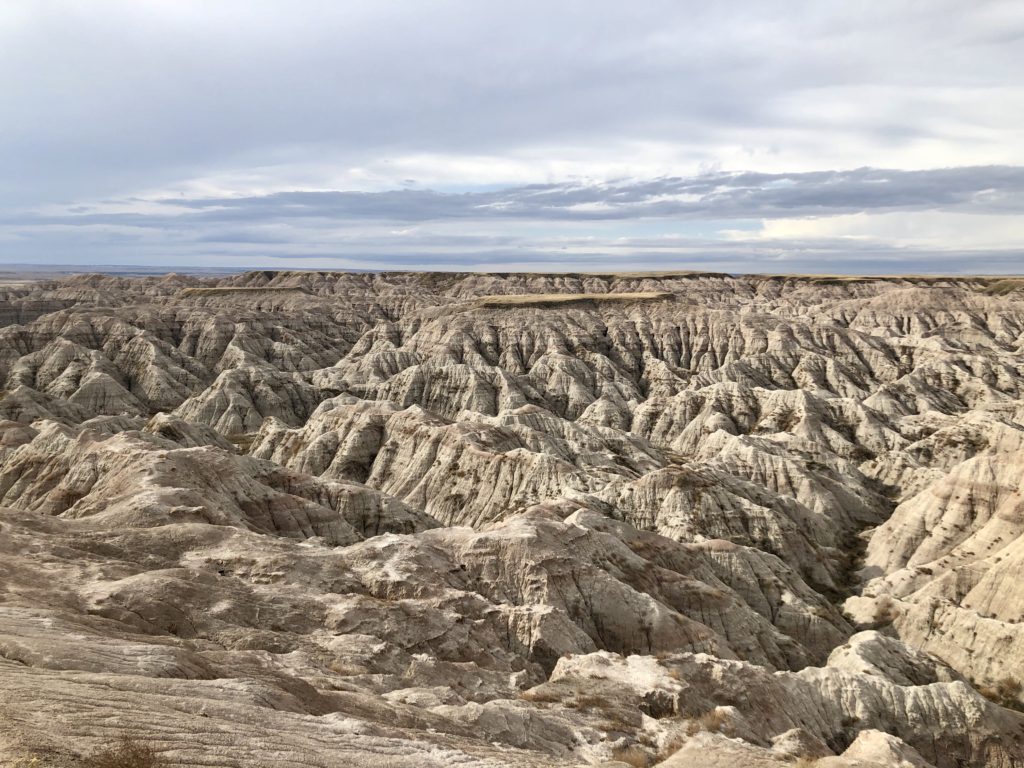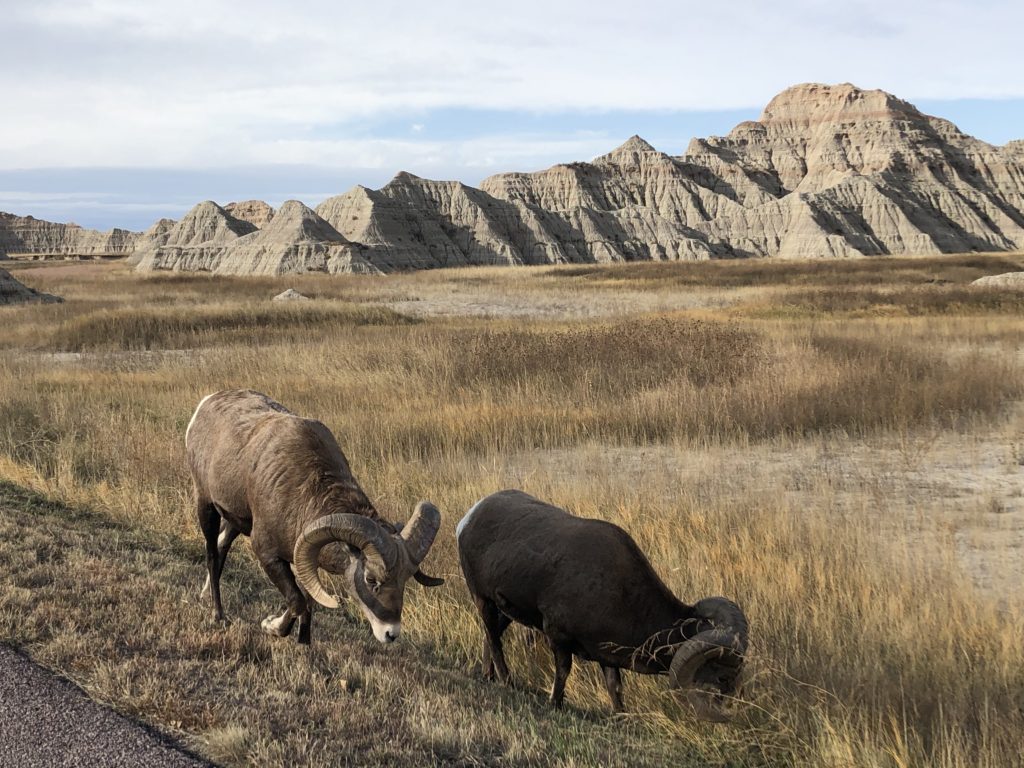Badlands National Park – Close By, Stunning Landscapes
As we all search for potential travel destinations a bit closer to home over the next several months, I’m reminded of how many unique regions we have in our own country. I visited Badlands National Park last year and was blown away by a landscape that resembled the surface of the moon! Rugged and remote, untamed and inhospitable. Those are all accurate descriptions of this region in southwestern South Dakota.
Badlands National Park is about an hour east of Rapid City, South Dakota, and the airport (RAP) is easy to navigate with a variety of rental car options. The park itself is normally open 24 hours a day, seven days a week, and entrance fees are collected year-round, but obviously, things can change, so be sure to check before you make plans (or just ask me!). If you’re looking to stay overnight in the park, there are a handful of campgrounds or adorable cabins like those at Cedar Pass Lodge, where we stayed. I’d suggest bringing your own drinks and snacks or stopping at the nearby Badlands Grocery when you arrive. I’d also highly recommend grabbing a beer with the locals at Wagon Wheel Bar, in the tiny town of Interior, just outside the park.

The major draw of Badlands National Park is the unique landscape, which is roughly half Badlands geologic formations (think rugged spires and deep canyons) and half mixed-grass prairie ecosystem (both ankle-high and waist-high grasses). This is basically heaven for budding geologists, as the formations here contain sandstones, siltstones, mudstones, claystone, limestones, volcanic ash, and shale. It’s also great for hiking, spectacular vistas, wildlife, and certainly plenty of wide-open spaces (no problems with social distancing here!) In just one day, we saw bison, bighorn sheep, prairie dogs, and, luckily, only one rattlesnake.
Life in Badlands National Park has adapted to the extreme conditions. The weather here can vary dramatically – hot, cold, dry, and windy, and you can even encounter blizzards, floods, droughts, and fires. Because of this, it’s important to monitor the local weather forecasts before heading out on any hikes. A few other common-sense safety tips for this region include:
- Wear the correct (closed-toe!) footwear when hiking. Watch for cracks and holes in the ground.
- Avoid dehydration and sunstroke. Summer is hot and dry, with temperatures often exceeding 100 degrees. Drink plenty of water, wear sunscreen, and cover your skin with long sleeves/pants.
- Beware of changing weather conditions. Check local weather forecasts, bring layers, and seek shelter when necessary.
- Respect wildlife. Keep a 100-yard distance wherever possible, especially from bison. Listen for – and avoid – rattlesnakes.
- Be prepared. Bring a map or GPS unit, plenty of water, and food, and make sure someone knows where you’re going. Don’t rely on your cell phone, as service can be spotty.
You probably won’t want to spend a week in Badlands National Park, but it’s an incredible, often overlooked National Park that I’d highly recommend for 2-3 nights. Mount Rushmore and the Black Hills are only about 90 minutes away, and Denver is a 6.5-hour drive, so there are plenty of ways to include Badlands National Park as part of a more extensive trip.

Are you looking for a getaway a bit closer to home this year? Hoping to check off another National Park from your bucket list? We can help create the perfect trip for you, whether near or far. Let’s start planning! Email me at kmarta@downunderendeavours.com or call (888)229-0082 and ask for Katie.